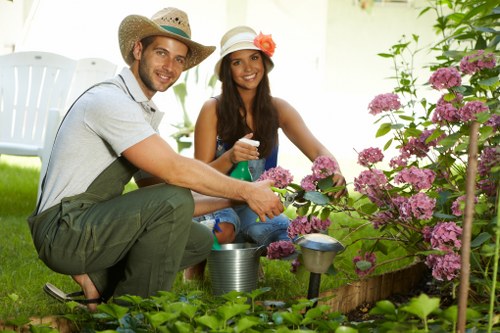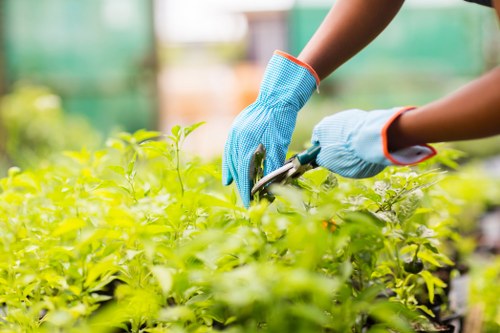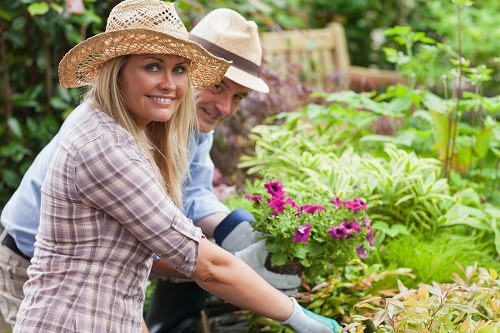Gardeners Poplar: Cultivating Beauty in Every Corner

Gardening enthusiasts know that the type of trees and plants you choose can significantly impact the beauty and health of your garden. Among the many trees available, Poplar trees stand out as a popular choice for gardeners due to their rapid growth and versatility.
Poplar trees are cherished for their tall stature and graceful appearance, making them ideal for creating natural screens, providing shade, or serving as focal points in landscape design. Their fast growth rate ensures that your garden transforms quickly, offering both aesthetic and practical benefits.
In addition to their visual appeal, Poplar trees are known for their ability to thrive in various soil types and climates. This adaptability makes them a reliable choice for gardeners looking to establish a resilient and vibrant garden.
The Benefits of Planting Poplar Trees

Poplar trees offer numerous advantages that make them a favorite among gardeners:
- Fast Growth: Poplars are one of the fastest-growing tree species, allowing gardeners to enjoy their benefits in a shorter time.
- Versatility: Suitable for various landscape designs, from urban gardens to rural settings.
- Shade and Privacy: Their dense foliage provides excellent shade and can serve as a natural privacy barrier.
- Environmental Benefits: Poplar trees help improve air quality by absorbing pollutants and producing oxygen.
These benefits make Poplar trees a practical and attractive addition to any garden.
Moreover, Poplars are relatively low-maintenance, requiring minimal care once established. This ease of maintenance allows gardeners to focus on other aspects of their garden without worrying about the health and upkeep of their trees.
Choosing the Right Poplar Variety

There are several varieties of Poplar trees, each with unique characteristics. When selecting a Poplar for your garden, consider factors such as climate, soil type, and the specific needs of your landscape.
Popular Poplar Varieties
- Lombardy Poplar: Known for its tall, narrow shape, ideal for creating windbreaks or privacy screens.
- Weeping Poplar: Features graceful, drooping branches, adding a touch of elegance to any garden.
- Black Poplar: A native species with vibrant green leaves and a robust structure.
- White Poplar: Appreciated for its broad canopy and resilience in various climates.
Selecting the right variety ensures that your Poplar tree will thrive and complement your garden's design.
Additionally, understanding the growth patterns and maintenance requirements of each variety can help you make an informed decision, ensuring long-term satisfaction with your garden.
Planting and Caring for Poplar Trees

Proper planting and care are essential for the healthy growth of Poplar trees. Here are some key steps to ensure your Poplar thrives:
Planting Tips
- Select a location with ample space for the tree to grow.
- Ensure the soil is well-drained and fertile.
- Dig a hole twice as wide as the root ball but no deeper.
- Place the tree in the hole, ensuring the root collar is level with the ground.
- Backfill with soil, gently firming around the roots.
- Water thoroughly after planting.
Maintenance Essentials
- Watering: Regular watering is crucial, especially during the first few years.
- Pruning: Prune to remove dead or diseased branches and to maintain shape.
- Fertilizing: Apply a balanced fertilizer in the spring to promote healthy growth.
- Pest Control: Monitor for common pests and address issues promptly.
Consistent care will ensure your Poplar tree remains healthy and continues to enhance your garden's beauty.
Additionally, mulching around the base of the tree can help retain moisture and regulate soil temperature, further supporting the tree's growth.
Integrating Poplar Trees into Your Garden Design

Poplar trees can be seamlessly integrated into various garden designs, providing both functional and aesthetic benefits. Here are some ideas:
Creating Natural Screens
Use Lombardy or White Poplar varieties to form a natural barrier, providing privacy and reducing noise from nearby roads.
Shade and Relaxation Areas
Planting Poplars near seating areas offers ample shade, creating comfortable spaces for relaxation and social gatherings.
Focal Points and Specimen Trees
A single Weeping or Black Poplar can serve as a striking focal point, drawing attention and adding character to your garden.
Windbreaks and Shelterbelts
Rowing Poplar trees can act as effective windbreaks, protecting other plants and structures from strong winds.
Seasonal Interest
Poplar trees provide seasonal beauty, with vibrant spring foliage, lush summer growth, and colorful autumn leaves.
By thoughtfully incorporating Poplar trees, gardeners can enhance the functionality and visual appeal of their outdoor spaces.
Additionally, combining Poplars with other plant species can create a diverse and dynamic garden ecosystem, supporting local wildlife and promoting biodiversity.
Local Relevance: Poplar and Its Surrounding Areas

The Poplar area is home to several vibrant neighborhoods, each offering unique features for gardeners. Here are the closest areas to Poplar that gardeners should explore:
- Canary Wharf: Known for its modern gardens and community green spaces.
- Stratford: Offers extensive parklands and well-maintained botanical gardens.
- West India Docks: Features waterfront gardens and scenic walking paths.
- Deptford: Home to historic gardens and a strong local gardening community.
- Blackwall: Provides access to green rooftops and urban farming initiatives.
- Island Gardens: Known for its picturesque pier gardens and diverse plant species.
- Millwall: Offers community gardens and spaces for horticultural activities.
- Bow Creek: Features riverside parks and areas for recreational gardening.
- Greenwich: Renowned for its expansive parks and historical garden landmarks.
- Wapping: Offers a blend of traditional and modern garden designs along the Thames.
- Bethnal Green: Known for its community-driven gardening projects and green initiatives.
- Canning Town: Features newly developed green spaces and urban gardening programs.
- Hackney Wick: Offers artistically designed gardens and eco-friendly planting schemes.
- Battersea: Home to large public gardens and private horticultural clubs.
- Shadwell: Provides access to community parks and sustainable gardening resources.
Each of these areas contributes to the vibrant gardening culture in and around Poplar, offering diverse opportunities for both novice and experienced gardeners.
Exploring these nearby areas can provide gardeners with inspiration, resources, and community support, enhancing their gardening experience.
Environmental Impact of Poplar Trees

Poplar trees play a significant role in the environment, contributing to both ecological balance and human well-being. Their environmental impacts include:
Air Quality Improvement
Poplars absorb carbon dioxide and other pollutants, helping to purify the air and reduce the urban heat island effect.
Biodiversity Support
The presence of Poplar trees creates habitats for various species of birds, insects, and other wildlife, promoting biodiversity.
Soil Conservation
Their extensive root systems help prevent soil erosion, especially in areas prone to heavy rainfall or strong winds.
Water Management
Poplar trees contribute to groundwater recharge and help manage stormwater runoff, reducing the risk of flooding.
- Carbon Sequestration: Capturing and storing carbon dioxide from the atmosphere.
- Pollutant Filtration: Removing harmful particles and gases from the air.
- Habitat Creation: Providing living spaces for various wildlife species.
- Soil Stabilization: Anchoring soil to prevent erosion.
Understanding these environmental benefits highlights the importance of integrating Poplar trees into urban and rural landscapes.
Moreover, gardeners can take pride in contributing to a healthier environment by choosing Poplar trees for their gardens.
Challenges of Growing Poplar Trees

While Poplar trees offer many benefits, they also come with certain challenges that gardeners should be aware of:
Maintenance Needs
Poplars require regular pruning to maintain their shape and remove any dead or diseased branches. Without proper maintenance, they can become unruly and potentially pose safety hazards.
Root Management
The extensive root systems of Poplar trees can interfere with nearby structures and underground utilities. It's essential to plant them at a safe distance from buildings and infrastructure.
Susceptibility to Pests
Poplar trees can attract pests such as aphids and caterpillars, which may require monitoring and management to prevent infestations.
Short Lifespan
Poplars generally have a shorter lifespan compared to other tree species, which may be a consideration for long-term landscape planning.
- Pruning: Regular trimming to maintain health and appearance.
- Spacing: Ensuring adequate space to accommodate root growth.
- Pest Control: Implementing measures to manage and prevent pest issues.
- Lifecycle Management: Planning for eventual replacement or rotation with other species.
Addressing these challenges proactively can help gardeners maintain healthy Poplar trees and enjoy their benefits for years to come.
Additionally, selecting disease-resistant varieties and employing integrated pest management strategies can mitigate some of these issues.
Innovative Uses of Poplar in Modern Gardening

In recent years, gardeners have explored innovative ways to utilize Poplar trees beyond traditional planting:
Vertical Gardening
Using Poplar trees as natural supports for climbing plants, creating vertical green spaces that maximize garden area.
Artistic Sculptures
Incorporating Poplar branches into garden art installations, blending nature with creativity.
Eco-Friendly Structures
Building trellises and pergolas using Poplar wood, combining functionality with sustainability.
Medicinal Uses
Researching and utilizing parts of Poplar trees for natural remedies and health benefits.
- Natural Supports: Enhancing vertical garden elements.
- Garden Art: Creating visually appealing installations.
- Sustainable Building: Using Poplar wood for eco-friendly structures.
- Health Applications: Exploring medicinal properties.
These innovative uses demonstrate the versatility of Poplar trees in modern gardening practices.
Furthermore, gardeners are encouraged to experiment with different applications, fostering a deeper connection with their natural surroundings.
Seasonal Care for Poplar Trees

Providing appropriate care for Poplar trees throughout the year ensures their health and longevity. Here’s a seasonal guide:
Spring
- Prune any damaged branches.
- Apply a balanced fertilizer to support new growth.
- Inspect for early signs of pests or diseases.
Summer
- Ensure consistent watering, especially during dry periods.
- Mulch around the base to retain moisture.
- Monitor for pest infestations and treat as necessary.
Autumn
- Remove fallen leaves and debris to prevent disease.
- Prune lightly to prepare for winter.
- Apply mulch to protect roots from freezing temperatures.
Winter
- Protect young trees from frost with burlap wraps.
- Avoid heavy pruning, as it can make trees more susceptible to winter damage.
- Inspect for any winter-related damage once snow melts.
Adhering to these seasonal care routines promotes the overall health and resilience of your Poplar trees.
Additionally, being attentive to seasonal changes allows gardeners to address issues promptly, ensuring their trees remain vibrant and healthy year-round.
Community and Education for Gardeners

Joining gardening communities and seeking educational resources can enhance your experience with Poplar trees:
Local Gardening Clubs
Engage with fellow gardeners, share experiences, and participate in community planting events.
Workshops and Seminars
Attend events focused on tree care, landscape design, and sustainable gardening practices.
Online Forums and Resources
Utilize online platforms to ask questions, seek advice, and access a wealth of information on Poplar tree cultivation.
Collaborative Projects
Participate in neighborhood or school garden projects that incorporate Poplar trees, fostering a sense of community and shared responsibility.
- Networking: Building connections with other gardening enthusiasts.
- Skill Development: Enhancing your gardening knowledge and techniques.
- Resource Sharing: Accessing tools, seeds, and other gardening essentials.
- Community Impact: Contributing to the beautification and sustainability of local areas.
By immersing yourself in these communities and educational opportunities, you can gain valuable insights and support for your gardening endeavors.
Moreover, sharing your own experiences and successes can inspire others, creating a positive ripple effect within the gardening community.
Conclusion: Embracing the Beauty of Poplar Trees

Poplar trees are a remarkable addition to any garden, offering a blend of aesthetic appeal, environmental benefits, and practical uses. Their fast growth and adaptability make them suitable for a wide range of gardening projects, from creating natural screens to serving as focal points in landscape design.
While they do present certain challenges, such as maintenance and root management, the rewards of cultivating Poplar trees far outweigh the drawbacks. By selecting the right variety, providing proper care, and integrating them thoughtfully into your garden design, you can enjoy the beauty and benefits of Poplar trees for years to come.
Embrace the versatility and elegance of Poplar trees, and watch as your garden transforms into a vibrant and thriving space that reflects your passion for gardening.
Whether you are a seasoned gardener or just starting out, Poplar trees offer endless possibilities to enhance your outdoor living space and contribute positively to the environment.
Frequently Asked Questions

1. How fast do Poplar trees grow?
Poplar trees are known for their rapid growth, often growing up to 5-8 feet per year under optimal conditions.
2. Are Poplar trees suitable for small gardens?
While Poplar trees are large and grow quickly, selecting a narrow variety like the Lombardy Poplar can make them suitable for smaller gardens, provided there is enough space.
3. What soil conditions do Poplar trees prefer?
Poplar trees thrive in well-drained, fertile soils but are adaptable to various soil types, including sandy and clay soils.
4. Do Poplar trees require a lot of maintenance?
Poplar trees require regular pruning to maintain their shape and health, but overall, they are relatively low-maintenance compared to other tree species.
5. Can Poplar trees improve air quality?
Yes, Poplar trees absorb carbon dioxide and other pollutants, helping to purify the air and contribute to a healthier environment.


